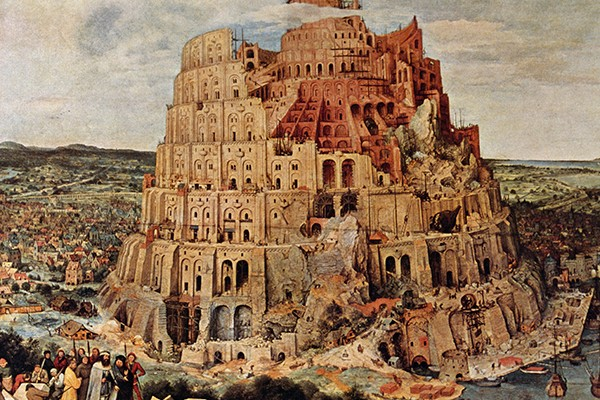The Fall of Babylon - Artifacts
Many factors deal with the rise and fall of empires. The decline of the Babylonian Empire can be explained, however, by examining three artifacts: a fragmented ziggurat brick, a cuneiform tablet talking about economic strife, and a damaged relief with drawings showing foreign invasions. These artifacts, all together, illustrate the fall of religious, economic, and military pillars which contributed to the downfall of the Babylonian Dynasty.
Firstly, we can refer back to a fragmented ziggurat brick, connected to a broken wall of a ziggurat, to translate the dramatic fall of the Babylonian Empire. The ziggurat was a massive structure that was the core of Babylonian religious and cultural identity, and it is excavated proof of their spiritual worship. The discovery of fragmented ziggurat bricks suggests a deterioration in religious buildings. This shows a clear negative impact, as it shows the neglect or destruction of Babylonian sacred sites. This destruction could also mean loss of “divine” favour for them, and it would have undermined their King at the time. The Babylonians believing that they lost divine favour due to their King could have led to major turning points in Babylonian history. While many ziggurats have been excavated from that time, thus showing they still remained mostly intact, many were changed by damage. The fall of religious unity weakened their society and left the empire vulnerable to internal discord and outside threats as well.
Secondly, we can examine a cuneiform tablet. Many cuneiform tablets were used for accounting, thus, if we analyze them, we can see at what time the economy was in an overall financial decline. This cuneiform tablet in the picture below is part of a later record of the Babylonian Chronicle, a collection of tablets that wrote the historical ups and downs of the Babylonian empire. From this, we can write down and make note of the financial and economic decline of the civilization. The chronicles found remain the same, pretty much untouched. Only the accounting and stories within them change, depending on which part of the Chronicle you read. The changes ended up being negative because as we can see, the Babylonian Empire, too, had a collapse. The chronicles however, while not providing “detailed” economic data like we have today, gave us a valuable wide historical context into the societal and political factors that influenced Babylon throughout its empire. It gives us information on the slow decline of the empire itself. Parts of the Babylonian Chronicle, such as the Chronicle Concerning the Years 747-649 BC (or just Chronicle 5), give us a look into the turning points in Babylonian history, such as the political instability, outside invasions, and inner discord that took place to affect Babylonian history as Chronicle 5 was written. Overall, this cuneiform tablet (below) which is part of the Babylonian Chronicle gives us a socio-economic record of Babylon, which gives us insight into how Babylon economically faltered, eventually leading to its fall.
Thirdly, and lastly, to figure out Babylon’s military decline, we will analyze a damaged relief, known as the “Lion of Babylon”. The Lion of Babylon is a large sculpture which was located at the entrance to the Ishtar Gate in ancient Babylon (now Iraq). The majestic lion symbolizes fierceness and strength, signs of military power in Babylonian culture. It also depicts foreign invasions and military prowess during the Babylonian Empire. However, it should be known that while it doesn’t specifically depict outside invasions, its placement on the Ishtar Gate, one of the main entrances into the city of Babylon, proved that it was a symbolic representation of the Empire’s military prowess. However, we can see over time, that from that image of a lion, Babylon’s military power wilted. The lion remained, but whether due to internal discord, a bad King, or military setbacks, Babylon slowly weakened its grip on its territories and in turn, lost its prestige. This marked a major turning point in Babylonian history, as it created major setbacks over what could have been future expansions, and it slowed down the growth of Babylon. In short, the damaged Lion of Babylon relief shows that over time, even the power of the Babylonian Empire wilts.
Glazed brick wall relief of lion- Rom Online Collection
In conclusion, the decline of the Babylonian empire was caused by the main factors of declining religious, economic, and military factors. These artifacts are representations and insights into the challenges that were faced by what were once the world’s most powerful civilizations. The artifacts show us the slow and quick change of the empire, highlighting the connection between religious, economic, and military factors when shaping the fate of an Empire.
-Fatimah Bass
BIBLIOGRAPHY----
“Clay Tablet; New Babylonian. Chronicle for years 605-594 BC.” n.d. Data set. Museum Number 21946. https://www.britishmuseum.org/collection/object/W_1896-0409-51.
“Lion Relief From the Processional Way | Yale University Art Gallery.” n.d. https://artgallery.yale.edu/collections/objects/4274#:~:text=ca.,605%E2%80%93562%20B.C.&text=This%20brightly%20colored%20relief%E2%80%94along,the%20heart%20of%20the%20city.
Marozzi, J. (2020, September 23). Lost cities #1: Babylon – how war almost erased ‘mankind’s greatest heritage site.’ The Guardian. https://www.theguardian.com/cities/2016/aug/08/lost-cities-1-babylon-iraq-war-history-mankind-greatest-heritage-site
———. 2024b. “Babylon - Wikipedia.” May 13, 2024. https://en.wikipedia.org/wiki/Babylon.





Comments
Post a Comment